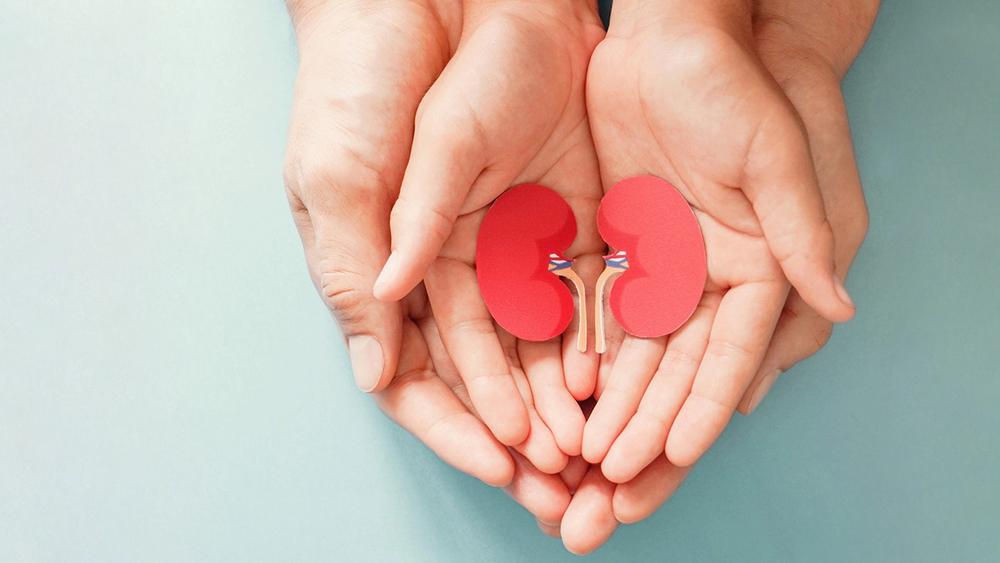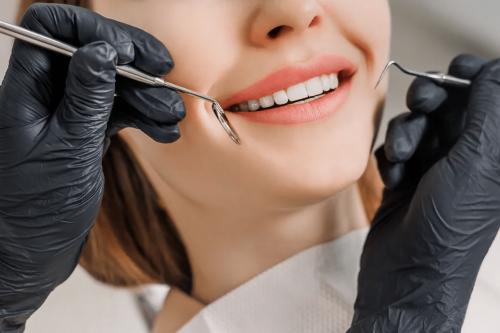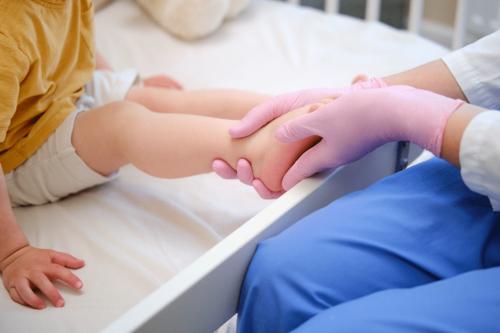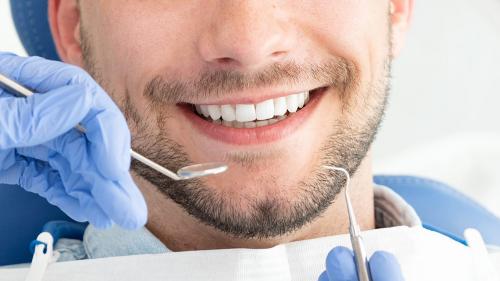
-
Hydronephrosis
The urinary tract has four parts: the kidneys, the ureters, the bladder and urethra. The main function of these organs is to remove waste materials and fluids in the body. If the urinary tract does not function normally you may develop some disease or conditions that can badly disturb your body system. Hydronephrosis is the swelling of a kidney, this is due to the accumulated urine that is not drained out from the kidney to the bladder because of an obstruction or blockage to the urinary tract. This condition can affect one or both your kidneys. This type of condition is usually found at birth (congenital blockage), but other underlying or risk factors can cause hydronephrosis like developing kidney stones, blood clots, scarring of tissue (from an injury or previous surgery), and other diseases that cause inflammation of the urinary tract.
Symptoms: There may not be symptoms of hydronephrosis. Some of the symptoms for children or adults can include, pain in your back or side (or flank pain), pain or a burning sensation while urinating, symptoms of a UTI, needing to pee more often, blood in your urine, and urinating less often than you used to, nausea and fever.
Treatment: You may be recommended for preventive antibiotic therapy to lower the risk of urinary tract infection. In case of severe hydronephrosis, surgery may be recommended to fix a blockage. If left untreated, this may lead to loss of kidney function (kidney failure). -
Kidney Blockages
A blockage (obstruction) in the urinary tract can increase pressure on the kidneys to the urethra and in turn, will slow the flow of urine. If the flow of urine is obstructed, it backs up and collects in the area of the renal pelvis, causing swelling (distending) of the kidneys and increasing the pressure on its surrounding internal structures, this is called hydronephrosis. An obstruction may affect only one or both kidneys. When the flow of urine is blocked, the formation of stones will develop. An infection may also occur because the bacteria that entered the urinary tract are not flushed out. This blockage may damage the kidney (kidney failure) and can result in loss of its function.
Symptoms: The symptoms may depend on the cause and location of the obstruction, usually it causes pain between the ribs and hips that comes and goes every few minutes. You may also experience nausea or vomiting.
Treatment: The treatment for urinary blockage aims to relieve the cause of obstruction to prevent further complications. Some of the types of treatment can be through medications or surgery. Other treatments are minimally invasive procedures, such as lithotripsy or endoscopic surgery to remove the stones that block the flow of urine in the kidney or ureter. -
Kidney Cysts
Kidney cysts are round, closed pouches or sacs that is filled with fluids formed in the kidneys. Kidney cysts can occur with disorders that may impair kidney function. This type of cyst isn’t cancer and most often are benign. Simple kidney cysts usually do not cause symptoms and no treatment is required.
Symptoms: You may have some symptoms at a later stage. Such as fever and chills, blood in your urine, and if the cyst is enlarged, they press on other areas causing Pain in your side, back, or upper abdomen.
Treatment: If the cysts are not causing any discomfort or no complications, your physician may not require you to do any treatments. However, in rare cases, if you develop any symptoms that need further treatment the following procedures will be your option.- Piercing and draining the cyst (aspirates), to shrink the cyst, a long, thin needle may be inserted through your skin and through the wall of the kidney cyst. Then the fluid is drained from the cyst and filled with a solution to prevent it from reforming.
- Surgery to remove the cyst (Laparoscopy). A large cyst that's causing symptoms may require surgery. A surgeon will make several small incisions in your skin and inserts special tools and a small video camera to remove the cyst.
-
Kidney infections
Kidney infections are caused by bacteria or viruses that travel up to your bladder, causing cystitis, and then up to one or both of your kidneys. This is a type of urinary tract infection (UTI), which is also called pyelonephritis.
Kidney infection is considered serious and needs immediate medical attention. This may cause further damage to the kidney and the bacteria can spread to the bloodstream making it more critical and dangerous because it can spread to your body system.
Symptoms: When you are having pain in the sides of your lower back or both sides of your groin, fever, chills, pain or burning sensation when urinating, Blood or pus (thick, white, or yellow liquid) in your urine, and diarrhea, you should consult with your Physician to be treated immediately.
Treatment: Kidney infection is often prescribed with antibiotics, to fight the bacteria and treat the infection immediately. If you have a very serious infection, you will be required to stay in the hospital to give you IV antibiotics.
-
Kidney Tumors
Kidney tumor or cancer is also known as “renal cancer”. When there is an abnormal change in your cell and often it grows out of control forming a lump or mass, this develops into a tumor. And they can grow and spread to other parts of your body.
Symptoms: There will be no signs or symptoms in the early stages of kidney cancer. At a later stage, some of the symptoms may include; Anemia, loss of appetite, fast weight loss, swelling in your ankles or legs, pain in your side or lower back that gets worse or does not go away, lump on the side or belly area, and fever. It is important to consult your Physician if you have any of these symptoms.
Treatment: The most common treatment for kidney cancer is surgery, to remove the tumor or cancer cell in the area. Other treatment options will be thru radiation or immunotherapy to prevent cancer from growing and spreading to the other organs.
-
Kidney stone diseases
When there is too much waste product in the body that is not removed (from blood to urine), crystal-like formations or “stones” are accumulated in the kidney. If they are small enough, they can pass as a waste product through urine. Once they grow larger, these stones may get stuck in the urinary tract.
You may find that any conditions in the kidney are similar to having kidney stones.
Symptoms: Consult your physician if you have any of these symptoms: sharp pain in your back or lower belly area, pain when urinating, fever and chills, frequently urinating, Urine that smells bad, or it appears to have an abnormal urine color, and Nausea or vomiting.
Treatment: The type of treatment depends on different factors like the size or type of the stone and your current condition. Treatment options may include:
-
Medication treatment and Dietary changes
Depending on the size of the kidney stones your Physician may prescribe medications, changes to your diet and to drink fluids to help push the stone through your urinary tract and pass out through your urine.
-
Minimally Invasive Extracorporeal Shock Wave Lithotripsy (ESWL)
Minimally invasive procedure to break up kidney stones into tiny pieces using soundwaves. After the treatment, these pieces can easily pass through your urinary tract and out through your urine. The procedure usually takes about one and may be done under general anesthesia, and you will not feel the procedure.
-
Ureteroscopy
A procedure where a tube-like instrument is inserted through the bladder into the ureter to remove the stone (if small pieces) or break them using a laser (if large pieces). Then will come out through passing urine.
-
Tunnel Surgery (Percutaneous Nephrolithotomy
In some cases, surgery will be required for the removal of a kidney stone.
-
-
Ureteropelvic junction (UPJ) obstruction
Obstruction of the Ureteropelvic junction (UPJ) is a blockage in one of the tubes that connects the kidney to the bladder. This can block the flow of urine, causing build-up in the kidney and resulting in hydronephrosis (swelling of the kidney). Mostly occurs in children than in adults, because of a congenital condition (which is present from birth).
Symptoms: An ultrasound may show kidney problems, especially in newborn baby or prenatal consultations. The most common type of symptoms that may occur is bloody urine (hematuria), lump in the abdomen (abdominal mass), kidney infection or stones, Urinary tract infection (UTI) with fever, and poor growth in infants.
Treatment: Diagnostic test will determine the degree of obstruction, then when necessary, the patient will undergo surgery. Many infants will show improvement after a few months, if the flow does not improve and the obstruction remains, other treatments are available such as:
-
Pyeloplasty is a common treatment for infants. This is an open (invasive) surgery to remove the UPJ and the ureter is reconnected to the renal pelvis creating an opening for the urine to pass through normally.
-
Laparoscopic Pyeloplasty is a minimally invasive surgery for children and adults performed under general anesthesia. A small incision “keyhole” in the abdomen to insert the scope repairing the blockage/narrowing of the area by inserting a small plastic tube (called a ureteral stent). This stent will remain in place for a few weeks (around 4 weeks) and will be removed.
-


